Category: PAST EXHIBITIONS
EXHIBITIONS
February 21, 2016 — March 29, 2016
The king of pop art, a universally renowned and hugely influential 20th century artist, whose work is continually exhibited, Andy Warhol (1928 -1987) was prolific: he worked in painting, photography, cinema, television and performance, and as a music producer and magazine editor. Warhol’s career began in 1949, when he moved to New York. He was then working as an illustrator for various magazines and his first commissions were as an adman. The 1960s would be his glory days – his tins of Campbell’s soups and portraits of celebrities even attained iconic status. His earliest artwork dates back to the 1950s. Warhol was then practicing his draughtsmanship, copying out photographs found in the American magazine LIFE. These drawings remained unrecognised until they were discovered in 2011 by the German gallery owner Daniel Blau. Over a hundred of them have been brought back together in this exhibition, which casts new light on the wellsprings of Warhol’s work. Through drawing, Warhol developed a visual language, sublimating reality and exploring the idea of a body of work that is both iconic and reproducible.
Public guided tours and lectures are held periodically at the museum.
On request, guided tours can be arranged for groups of up to 25 people.
Please make your reservations by phone or email, at least one week in advance!
Contact
Musée des beaux-arts
Marie-Anne-Calame 6
CH – 2400 Le Locle
T +41 (0)32 933 89 50
mbal@ne.ch
Opening Times
Wed-Fri 12.30 – 17.00
Sat-Sun 11.00 – 17.00
For further information please click here to visit the museum’s website.
***
February 1, 2016 — February 29, 2016
An exhibition of works on paper by A.R. Penck
1 – 29th of February, 2016
Daniel Blau
Maximilianstr. 26
80539 Munich
Open from Monday to Friday from 11 am to 6 pm.
November 7, 2015 — November 22, 2015
A special exhibition on the occasion of the Festival Photo Saint-Germain.
Sofia Valiente received her BFA in Art from Florida International University in Miami, Florida in 2012. Her first book, Miracle Village, was published during her tenure in the prestigious photography department of the residency program Fabrica in Treviso, Italy. Miracle Village, first exhibited at Daniel Blau gallery in London, recounts the personal journeys of sex offenders living in seclusion within the purpose-built community on the outskirts of a rural town in an impoverished area of Palm Beach County, Florida.
The project houses over 100 sex offenders. Florida’s stringent legislation requires offenders to live a minimum of 1,000 feet from any place where children congregate, many municipalities extend this law to increase the distance to 2,500 feet.In practice this becomes extremely difficult to abide by, leaving many offenders struggling to find housing and re-establish their lives in society. The village, founded by a Christian ministry, seeks to help offenders that have no place to go.
For over a year Valiente befriended, lived among and photographed the residents of Miracle Village where they shared their stories of estrangement, solitude and rehabilitation.Valiente’s work has, for the first time, given these outcasts whose lives are forcibly connected by their offences and shared stigma, a voice and identity. The undeniable artistic merits of the Miracle Village project lie not only in the exquisite photographic compositions, but in Sofia’s candid portrayal of the feared and ostracised. The photographs, which are both captivating and unsettling, are accompanied by equally striking stories in her critically-acclaimed book.
Sofia Valiente is represented by the Daniel Blau Gallery in London/Munich – her work has been exhibited in London and at New York’s AIPAD fair as well as various museum group shows in Miami. She recently received a World Press Photo award for Miracle Village (1st prize, Portraits, Stories). She is also a recipient of the 2015 South Florida Cultural Consortium Artist Fellowship and Burn Magazine’s first Young Talent Award. Sofia is currently based in South Florida, USA.
_________________
Muck city road. Près de 10 km de route abandonnée. Il y a une drôle d’odeur dans l’air. Un mélange de barbe à papa et de fumée.
Les champs de canne à sucre couvrent le paysage à perte de vue. Cinq kms plus loin et à côté d’un village il y a des rails d’une ligne de chemin de fer. Les locomotives y passent à minuit. Le bruit de leurs turbines fait écho dans le village. Les gens qui vivent la, ne sont pas gênés par le signal du train de canne à sucre au petit matin. Pour eux, c’est le bruit du progrès et ils aiment ce bruit. Ce village c’est Miracle village. Plus de 100 délinquants sexuels y habitent.
– Joseph Steinberg (dans l’introduction de Miracle Village)
Daniel Blau est heureux de présenter Sofia Valiente, la lauréate du premier prix du concours du World Press photograph 2015 pour les portraits/histoires. Miracle Village, projet exposé pour la première fois la galerie Daniel Blau est une exploration provocante de la vie recluse d’hommes et de femmes, tous délinquants sexuels, vivant dans un village communautaire crée de toutes pièces et situé dans la banlieue d’une ville rurale, une région pauvre de Palm Beach County en Floride. Miracle Village accueille des délinquants sexuels qui en raison, de la législation sévère ne peuvent pas trouver de logements dans la mesure où la loi leur imposent de résider à minimun 300 mètres de tout endroit où se trouvent des enfants. Grâce à Sofia Valiente, ces exclus dont les vies sont irrémédiablement liées à leurs infractions et qui partagent leur stigmates, se voient enfin donnés une voix et une identité. Les qualités artistiques du projet de Miracle Village résident autant dans les compositions photographiques de toute beauté, qu’à sa manière de portraiturer de manière innocente ceux que nous craignons et que nous ostracisons. Les photographies aussi captivantes que troublantes sont accompagnées d’histoires tout aussi bouleversantes dans un livre éponyme. Publié dans une édition limitée, comme les photographies, le livre révèle une connaissance approfondie des délinquants à travers leurs témoignages écrits et reproduit leur propre écriture.
Opening / Vernissage: November 6, 6 – 9 pm
Exhibition: November 7 – 22, 2015
Opening Hours are Tue. – Fri. 2.30 – 6 pm, Sat. 11 – 1 / 2.30 – 7 pm, Sun. Nov. 15, 2.30 – 6 pm
Sofia Valiente will be at the Gallery for her book signing on November 13, 5 – 7 pm
at Galerie Meyer – Oceanic and Eskimo Art
17 rue des Beaux-Arts, 75006 Paris
+33 1 43 54 85 74
July 1, 2015 — July 31, 2015
Daniel Blau is delighted to announce our annual Young Photographers’ Competition featuring work by:
Melissa Arras
Alan Knox
Julia Parks
Michael Radford
We are delighted to present a selection of work by these talented photographers in a group exhibition here in London from the 1st to the 31st of July.
May 12, 2015 — June 12, 2015
SONDERAUSSTELLUNG ZUR ERINNERUNG AN MÜNCHENS GESCHICHTE 1923 – 1946
,,In der letzten Ausstellung in den Räumen am Odeonsplatz möchte ich die Präsentation im neu eröffneten Münchener NS-Dokumentationszentrum um eine Nuance ergänzen. Ich verzichte dabei auf moderne Abzüge und großformatige Reproduktionen und zeige einzig und allein Originale der NS-Zeit. Das Original, der Abzug aus der Zeit, ist der unmittelbare Kontakt und als solcher Zeuge und Ankläger. Die Reproduktion dagegen erlaubt ähnlich wie ein Fernsehbild automatisch Distanz.
Es geht auch um meine Vergangenheit. Meine Großeltern und Eltern waren Zeugen und direkt betroffen. Ich bin nur indirekt betroffen. Aber so wie man sich der positiven Leistungen seiner Vorfahren rühmt und sich auf sie bezieht, berühren auch solche negativen Lebensereignisse.
Spätestens seit den zwanziger Jahren wurde in München geplant und vorbereitet, was im Laufe der dann folgenden Jahrzehnte geschah. Ich verstehe nicht den Magnetismus, der die Menschenmassen synchron den Arm heben ließ. Unbegreiflich ist ebenso, dass der Großteil der Bevölkerung zumindest schweigend hinnahm, daß sich in der näheren Umgebung die schrecklichsten Ungeheuerlichkeiten ereigneten. Die Menschen gaben sich zu anfang ahnungslos, was die Vorgänge in den Lagern betraf. Als die Amerikaner und Briten kurz vor Kriegsende die Konzentrationslager öffneten und die Grausamkeiten dokumentierten, führten sie die deutschen Umlandbürger in die Konzentrationslager, direkt an den Leichenbergen vorbei, um sie zum Hinsehen zu zwingen. Diesen Zweck hatten auch zwangsverordnete Kinobesuche, bei denen Dokumentarfilme der Gräuel gezeigt wurden, ebenso wie ›Ausstellungen‹ in Kirchen und Sporthallen mit riesig vergrößerten Fotos aus den KZs.
Die Originale, die in der Galerie ausgestellt werden, sind Zeitzeugen und authentische Dokumente unserer dunkelsten Tage. Die Bilder bewegen mich zutiefst und begleiten mein Denken. Auch sie sind Teil meiner Vergangenheit. Ich möchte sie der Öffentlichkeit nicht vorenthalten.”
– Daniel Blau
Munich: A City of Unrest
A special exhibition dedicated to Munich’s history from 1923-1946
“With the last exhibition at Odeonsplatz 12, I want to add more depth to the presentation in the newly opened NS-Dokumentationszentrum in Munich.
I avoid the modern reproduction or enlargement and show only originals from the 1930s and 40s. The original, the print from the time, is the direct link and as such witness and accuser. A reproduction on the other hand allows for distance just like a TV picture and has a much weaker impact.
This is my past and history as well. My grandparents and parents were witnesses and directly affected. I am only indirectly concerned but in the same way one praises ones ancestors positive achievements, negative acts become motivations as well.
What was happening in Germany in the following years had been planned and prepared in Munich from the 1920s. I do not understand the magnetism, which led to the masses simultaneously raising their arms. Just as incomprehensible is the silent acceptance by the largest part of the population of the most gruesome atrocities being committed nearby. At the end of the war many people pretended to be ignorant of what had happened in the concentration camps. When the American and British forces liberated the camps and documented the cruelties as far as they could, they also made the people of near by villages and cities walk by the bodies and look at them. Forced visits to the movie theaters showing documentaries about the concentration camps and presentations of enlarged photographs in churches and sports halls were also obligatory. The originals exhibited at the gallery are witnesses and authentic documents from our darkest days.
These pictures move me deeply and have become part of my thinking. They are part of our past and I do not want to keep them from the public.”
– Daniel Blau
April 10, 2015 — May 22, 2015
Daniel Blau is pleased to present APOLLO 8 x 10, an exhibition showcasing pictures taken on pioneering NASA explorations beyond the earth’s boundaries. These missions remain unrivalled in their ability to extend our understanding of our cosmos and of photography’s artistic and scientific values.
APOLLO 8 x 10 hosts photographs taken on both manned and unmanned NASA missions, presenting an exciting selection of vintage prints from Apollo as well as Viking, Pioneer, Gemini, Skylab and other missions.
To See is to Believe
Centuries of human curiosity, as well as pioneering explorations, have empowered an inherent desire to reach beyond known territories and expand mankind’s vision.
Not only have these photographs provided scientific data, they continue to inform our cultural understanding of the unknown. Much as Galileo Galilei came to observe the unexplored craters of the Moon, the movement of Venus and the orbiting moons of Jupiter – these photographs highlight humankind’s interest in the subliminal experience of life, defying of our seemingly insignificant presence in our vast cosmos.
How can we distinguish the artistic merits between a drawing made by Leonardo da Vinci of a flying machine and the mosaic panoramas of the moon? From cave paintings to Buzz Aldrin’s footprint on the moon’s surface, art declares the power of exploration: ‘We have been here, I am here, I am the first’. It is photography which has enabled humans unparalleled access to observe and record our astonishingly beautiful neighbouring planets.
This exhibition will bring to light, and to earth, longstanding questions of defining a universal art which inherently incorporates technological and scientific development. Our modern world’s increasingly blurred distinctions between scientific investigation and creative expression need not be a troubling juxtaposition, but instead an example of art as a subjective and flexible manifestation of human triumph.
February 20, 2015 — March 20, 2015
Daniel Blau is happy to announce our first yearly guest exhibition, this year featuring Adnan Sezer with his exhibition Hair: Object of Desire and Culture in our London gallery at 51 Hoxton Square, February 20th – March 20th.
The exhibition presents an exquisite collection of vintage photographs pertaining to the subjects of Hair: Object of Desire and Culture. Sezer’s exhibited collection presents various approaches of how to understand the practices and beliefs across sociological, historical and anthropological frameworks in the 19th and 20th Century.
The fascination with the subject of hair can be seen in works such as Bonfils’ portrait of a “Muslim Sheik” (Egypt, ca. 1870-1880), the “Turk of Trabzon” (Turkey, 1870s) taken by an unidentified Russian photographer; or the unusual family triptych by Dmitri Ermakov of a father, mother and son with hypertrichosis (Iran, 1870-1880s).
Sezer will present the photographs in smaller sub-series; one of which is a remarkable collection of photographs showing women with shaved heads in 1944 / 45. These photographs highlight the dramatic aspects relating to hair, through notions of purification and discrimination. This act of cutting, captured by photographers sometimes under challenging circumstances, shows a form of violence primarily affecting womens’ bodies, thus demonstrating a collective punishment seen through public humiliation.
January 16, 2015 — February 13, 2015
Jing Jin City and Miracle Village are new photographic projects by two young contemporary artists, Andi Schmied and Sofia Valiente, which we are thrilled to present concurrently in a unique exhibition in January 2015.
Andi Schmied and Sofia Valiente are both interested in communities and social spaces, but have very individual approaches to documentation and intervention. Andi is concerned with architectural and urban spaces, whereas Sofia’s work depicts human faces and relationships. The artists each spent time living in the places they photographed. These procedural and artistic comparisons are particularly apparent and compelling when the projects are viewed together.
Andi Schmied’s Jing Jin City comprises photographs of Jing Jin, which is situated about an hour’s drive from Beijing. The city is home to a development of 3,000 luxury villas, alongside a Hyatt Regency hotel, golf courses, entertainment complexes and the other usual trappings of a wealthy suburban town. The villas form part of an initiative by the local district government, which envisioned Jing Jin as a “new city” built to embody ideals of environmental sustainability as well as material comfort.
Andi’s project will be presented in dialogue with Sofia Valiente’s Miracle Village. The small community of Miracle Village is located on the outskirts of a rural town in an impoverished area of Palm Beach County, Florida. It is currently home to over 100 sex offenders, who for legislative reasons have been unable to find housing elsewhere. The law obliges offenders to live a minimum distance of at least 1,000 feet from any place where children congregate, such as schools or bus stops. In practice, this is very difficult to comply with, and many of these individuals struggle to find a place to live and to re-establish themselves in society. Miracle Village was developed under Fabrica’s Editorial Area.
December 1, 2014 — December 20, 2014
This Christmas Daniel Blau Gallerie in Munich is pleased to present a selection of photographs from the gallery’s most important collections.
By setting the scene of variety and juxtaposition as a context, the show culminates in a colourful, affordable and light-hearted exhibition for Christmas.
Works by David Bailey, Ansel Adams, Margaret Bourke-White, and Nobuyoshi Araki are featured alongside astonishing US Army, US Airforce, and NASA prints.
Araki to Zangaki contrasts documentary prints with contemporary colour photographs and illustrates the varied forms and practices of photography. The works by Araki and Bailey highlight the diverse way in which one medium of photography can be used. Diversity is a theme throughout resulting in an interesting portrayal of the human landscape in the 20th and 21st Century.
October 31, 2014 — December 19, 2014
Daniel Blau is pleased to present the first solo exhibition of Margaret Bourke-White’s work at our London gallery.
Featuring a selection of over sixty vintage photographs, our Bourke-White exhibition presents contrasting facets of the photographer’s work, including incredible images of the Second World War in North Africa and Italy shown alongside previously unseen and lesser-known photographs of burlesque dancers backstage.





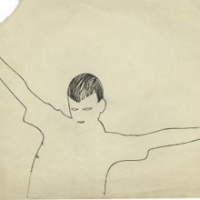
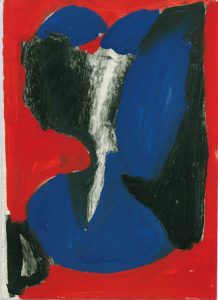
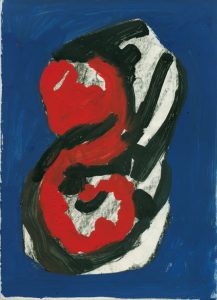
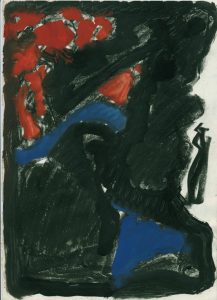
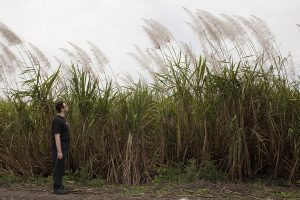

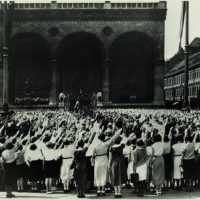
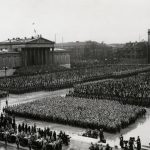
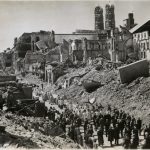
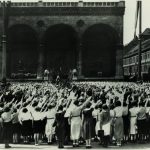

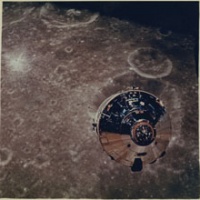
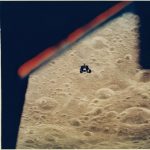
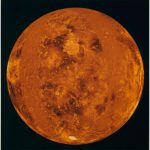
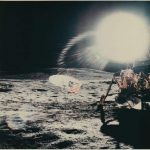





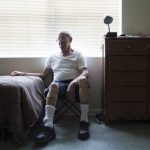

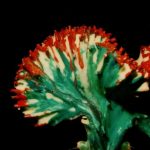
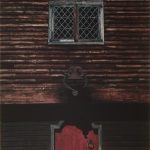
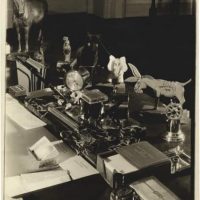

 +49 89 29 73 42
+49 89 29 73 42